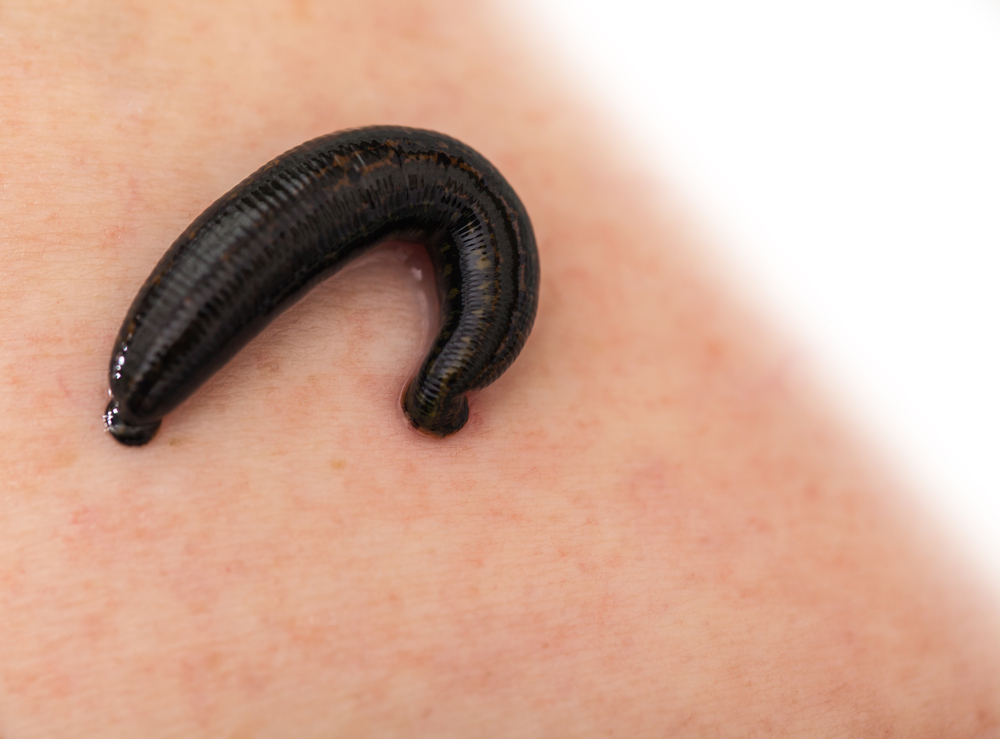Skin grafts are a crucial tool in reconstructive medicine, allowing for life-saving procedures and restoring function and aesthetics for patients after severe burns, injuries, or oncological surgeries. Despite advances in surgical techniques, the effectiveness of skin grafts is often threatened by issues related to microcirculation, venous stasis, and infection risks. In this context, the traditional treatment method using medicinal leeches (Hirudo medicinalis) gains significance as a potential support in the healing process of skin grafts. Using these small but highly effective creatures can bring numerous therapeutic benefits, raising the question: do leeches support treatment for skin grafts?
What is a skin graft?
A skin graft is a medical procedure involving the transfer of skin from one area of the body (donor) to another location (recipient) that has been damaged due to burns, injury, surgery, or disease. This procedure is often used to treat deep burns, chronic ulcers, postoperative wounds, and reconstruction after removing skin cancers. There are different types of skin grafts, including autografts (skin taken from the same patient), allografts (skin taken from another person), and xenografts (skin taken from another species, usually pigs). Skin grafts can significantly speed up the healing process, reduce the risk of infection, and improve the function and appearance of the affected area.
How is a skin graft performed?
The skin graft process begins with careful preparation of both the donor and recipient areas. Donor skin is typically harvested using special tools that allow for obtaining thin layers of skin. The harvested skin can vary in thickness, from thin epidermal grafts through dermo-epidermal grafts, to full-thickness grafts. After harvesting, the donor skin is prepared for transplantation, which may include cleaning and adjusting its size to fit the recipient area. The skin is then precisely placed on the damaged area and secured with sutures, surgical staples, or special adhesives. Both the recipient and donor areas are then appropriately dressed to ensure optimal healing conditions. The transplanted skin begins to integrate with the surrounding tissues, with the recovery period being crucial, requiring the patient to avoid stressing the grafted area and to maintain hygiene to prevent infections. Within a few weeks to several months, the transplanted skin should fully integrate, restoring the function and aesthetics of the damaged site.
Where is skin for grafts obtained from?
Skin for grafts is most often taken from areas of the body that are less visible and have enough healthy tissue to regenerate, such as the thighs, buttocks, lower abdomen, or inner arms. The choice of the harvest site depends on several factors, including the amount of skin needed, graft thickness, and the patient’s overall health. The donor area is carefully prepared to minimize complications and ensure quick healing. The skin harvested for grafts can vary in thickness, from thin epidermal layers to full-thickness grafts, depending on specific clinical needs and the graft site.
What are the indications for skin grafts?
Indications for skin grafts include a wide range of medical situations where natural healing processes are insufficient or impossible. Skin grafts are most commonly used in severe burns that have destroyed deeper layers of skin and subcutaneous tissue and in treating chronic, non-healing ulcers, such as pressure sores, diabetic ulcers, and venous ulcers. Skin grafts are also indicated in reconstruction after oncological surgeries, where removing skin tumours leaves significant defects, and in treating extensive traumatic wounds that cannot heal independently.
Additionally, skin grafts are used in cases of infected wounds, where removing dead tissue (debridement) leaves areas needing rapid coverage to prevent further infections. Another indication includes situations requiring aesthetic and functional reconstruction, such as after accidents causing significant deformities or in plastic surgeries needing extra skin to achieve the desired cosmetic effect. Skin grafts can also be used in patients with genetic or acquired skin diseases causing extensive damage.
What are the contraindications for skin grafts?
Contraindications for skin grafts include situations where the procedure might cause more harm than benefit or be ineffective. Patients with active infections in the recipient or donor areas are usually excluded from grafting because infection can lead to graft failure and health complications. Individuals with uncontrolled systemic diseases, such as diabetes, vascular diseases, or immunosuppression, may also have contraindications for skin grafts due to the increased risk of complications and delayed healing.
Moreover, patients with blood clotting disorders, who are at risk of excessive bleeding during and after surgery, may be unsuitable candidates for this procedure. Skin grafts are also contraindicated in patients who have too little healthy skin available for harvesting, often the case in extensive burns or widespread skin diseases. Other contraindications include allergies to anesthetics or materials used during the procedure and the patient’s overall poor health, which could prevent undergoing surgery and rehabilitation.
Leeches as an adjunct treatment for skin grafts
Due to their unique medical properties, medicinal leeches (Hirudo medicinalis) can be used as an adjunct treatment for skin grafts, significantly improving the procedure’s outcomes. Leeches produce hirudin, a substance acting as a potent anticoagulant, preventing blood clotting and allowing its free flow in the graft area. This helps remove excess blood from the graft site, which is crucial in venous stasis and swelling cases, which can threaten the graft’s success.
Additionally, leeches can support the healing process of the grafted skin by stimulating microcirculation. Their saliva contains various bioactive compounds that dilate blood vessels and improve tissue perfusion. Enhanced perfusion is vital for providing oxygen and nutrients, promoting regeneration and integration of the grafted skin with surrounding tissues. Efficient microcirculation also helps remove metabolic waste from the graft site, reducing the risk of infections and other complications.
Furthermore, medicinal leeches can reduce pain and inflammation at the graft site. Compounds in leech saliva, such as eagles, have anti-inflammatory properties, helping alleviate swelling and inflammation. Their analgesic effects can relieve postoperative patients, supporting their recovery and comfort. Leeches can thus serve as an additional tool in supporting the healing process after skin grafts, contributing to improved clinical outcomes and quality of life for patients.

